-
What are the names of the enzyme linked receptors (4)? Can you state what molecules they each respond to?
Tyrosine kinase receptors:
Insulin
Epidermal growth factor (EGF) or
Platelet derived growth factor (PDGF)
JAK/STAT:
Growth hormone
Interferon
Serine Threonine receptor kinase:
TGFb (b for beta)
Nuclear receptors:
Glucocorticoid
Thyroid hormone
-
Are enzyme linked receptors predominantly single transmembrane receptors?
Yes
-
What happens when the enzyme-linked receptors are activated?
It leads to the activation of receptor kinases
-
What happens when receptor kinases are activated?
Leads to the activation of multiple signalling pathways
-
Enzyme linked receptors are involved in the regulation of? (5)
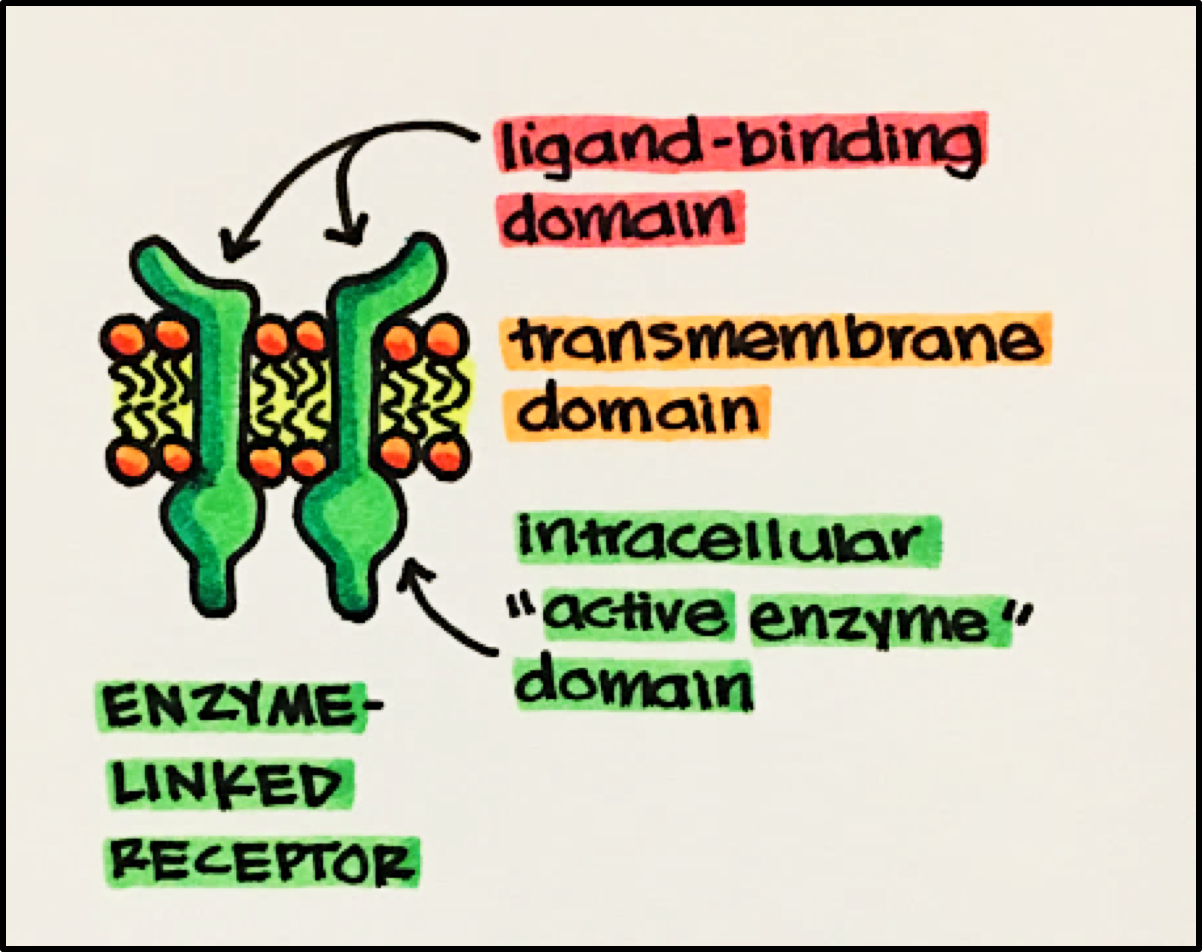
Cell growth
Division
Differentiation
Survival
Migration
-
What is inappropriate receptor activity associated with?
Disease (notably cancer)
-
Binding of an agonist molecule to a kinase receptor leads to what?
Leads to dimerisation (Molecular dimers are often formed by the reaction of two identical compounds) and then autophosphorylation (a type of post-translational modification of proteins)
-
Phosphorylated tyrosines form what?
Docking sites (binding sites for other substrates), within the signal transduction cascade
-
Outline the series of events that occur after tyrosine has been phosphorylated (3)
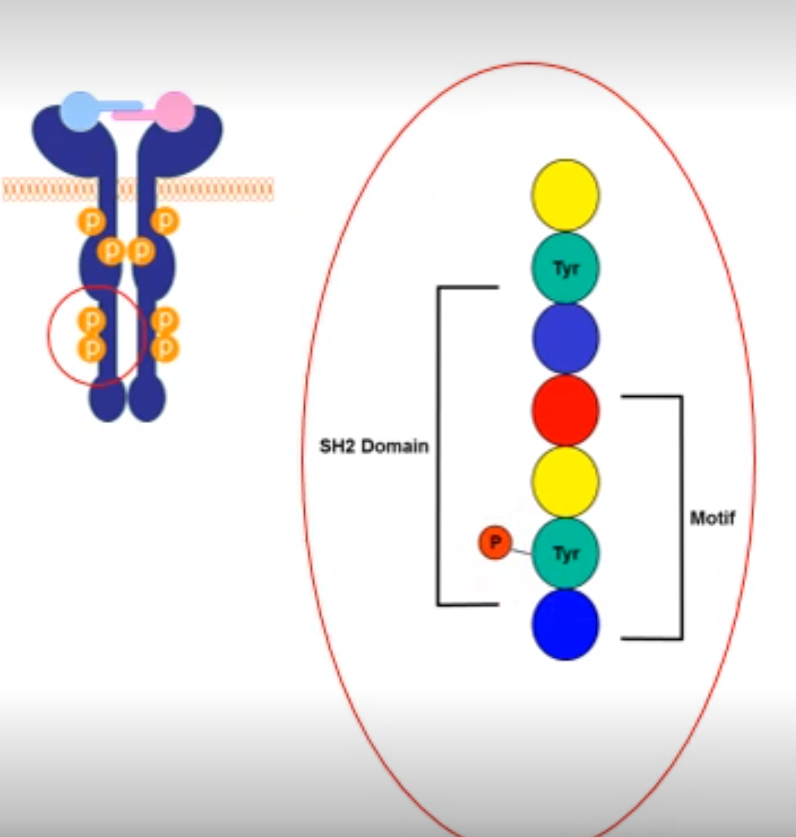
1)Proteins which bind to the activated receptor recognises a specific sequence of amino acids that include a phosphorylated tyrosine (via dimerisation)
2)Not all tyrosines within a tyrosine kinase receptor are phosphorylated, only specific tyrosine residues.
3)These tyrosine residues together with a number of other amino acids form a motif which is recognised by other proteins in the transduction pathway through the SH2 domain (a specific domain which binds and recognises sequences of specific amino acids)
-
What is the structure of an Insulin receptor?
2x a (alpha) chain
2x b (beta chain
Held together by disulphide bonds
-
Receptor tyrosine kinase activation summary
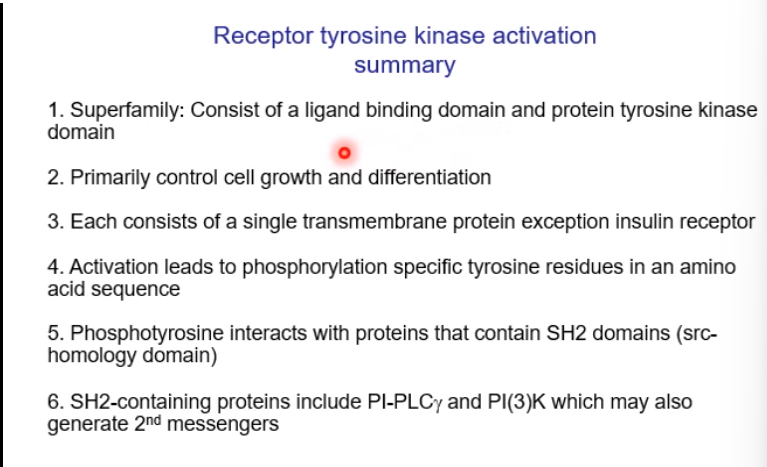
-
Kinases do what?
Add phosphates
-
Phosphatases do what?
Remove phosphates
-
Outline the activation of phosphatases (3)
1)As activation of these receptors leads to phosphorylation, de-phosphorylation leads to inactivation
2)Phosphatases are activated as a result of the receptor activation
3)Therefore, the signalling process sets in motion events that lead to signal termination
-
Outline the activation of tyrosine kinase receptors and how they lead to the activation of multiple pathways (pt 1) (3 points)
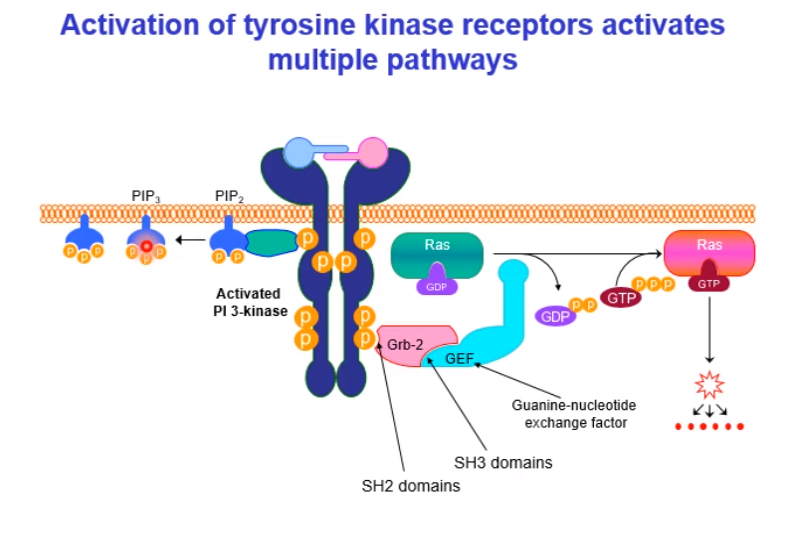
1)Grb-2 will bind to tyrosine through the SH2 domain, and will undergo a conformational change and allow it to interact with GEF (Guanine nucleotide exchange factor) via the SH3 domain and leads to the activation of Ras
2)Ras is a membrane associated protein, when Ras is inactivated it is bound to GDP
3)When it is activated, GDP is expelled and exchanged for GTP, as a result 'Ras GTP' is activated which will go on to activate a number of intracellular pathways
-
Outline the activation of tyrosine kinase receptors and how they lead to the activation of multiple pathways (pt 2) (3 points)
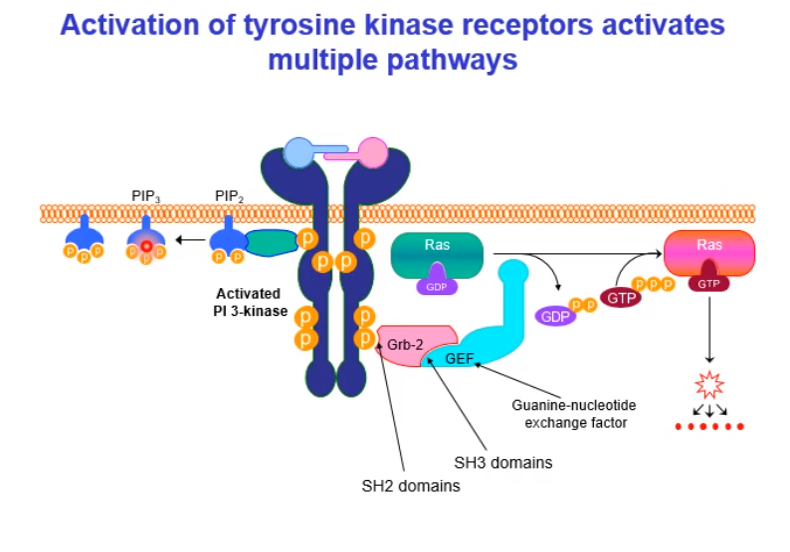
4)Other proteins can be activated, such as PI3 kinase, which will interact and recognise specific tyrosine residues on the activated tyrosine kinase receptor
5)This particular kinase will phosphorylate a membrane associated lipid, PIP2 which will form PIP3, PIP3 will bind to and activate 2 proteins called PDK1 and PKB
6)PDK1 will phosphorylate and activate protein kinase B which will dissociate and phosphorylate other proteins within the signal transduction cascade
-
Outline the activation of insulin receptors and how they lead to the activation of multiple pathways (pt 1) (3 points)
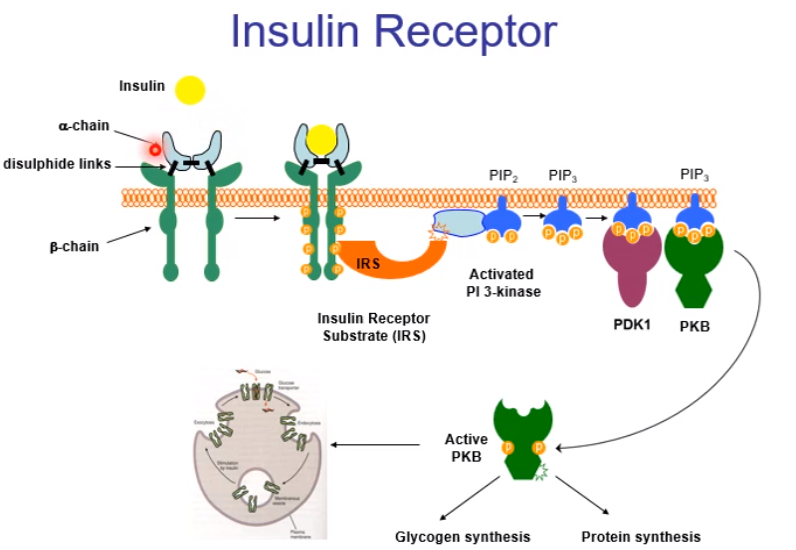
1)Binding of insulin to the receptor causes a conformational change bringing together the two beta subunits, which allows for autophosphorylation to take place
2)The tyrosine kinases will recruit other proteins to the receptor, IRS (Insulin receptor substrate)
3)Recruitment to the receptor causes a conformational change and allows for the recruitment of other signal transduction proteins including PI3 kinase
-
Outline the activation of insulin receptors and how they lead to the activation of multiple pathways (pt 2) (4 points)
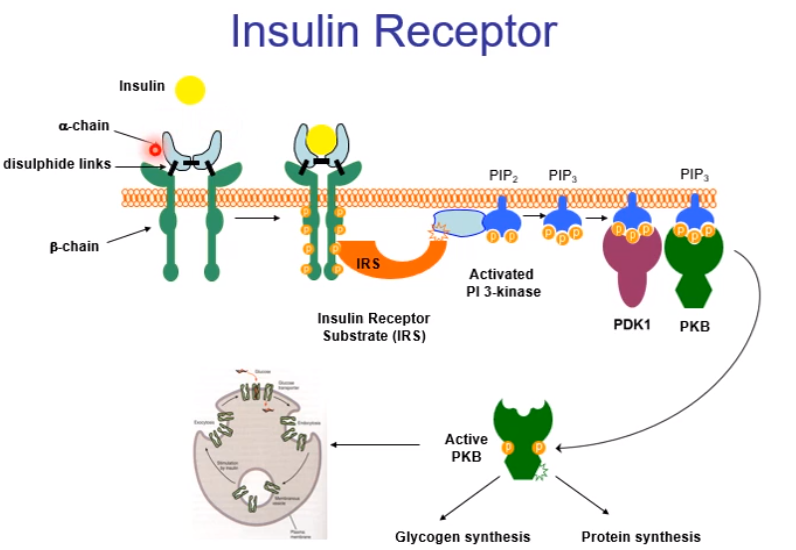
4)This particular kinase will phosphorylate a membrane associated lipid, PIP2 which will form PIP3, PIP3 will bind to and activate 2 proteins called PDK1 and PKB
5)PDK1 will phosphorylate and activate protein kinase B which will dissociate and phosphorylate other proteins within the signal transduction cascade
6)Active PKB will lead to glycogen synthesis and protein synthesis. It will also stimulate the expression of glucose transporters in the surfaces of some cells
7)The insulin receptor also recruits other proteins such as Ras and Phospholipase C
-
What is autophosphorylation?
When a protein kinase catalyses the addition of phosphate groups to its own amino acid residues.


